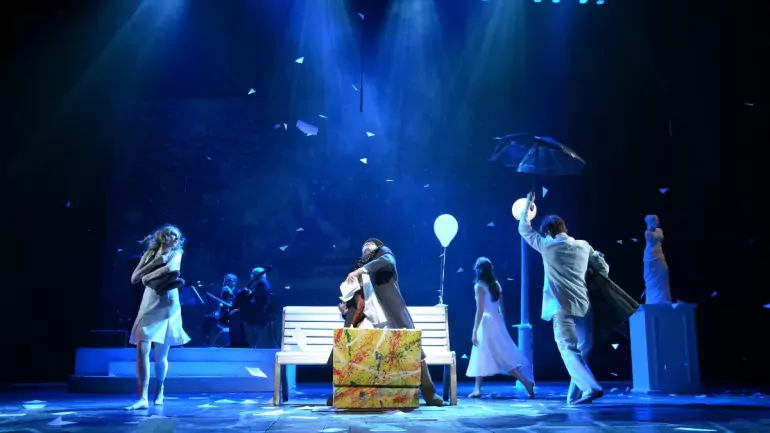ENTERTAINMENT
Actors perform on stage. Luxurious stage, quality costumes, effective lighting, and powerful, high-quality sound are ideas of how to make community theater productions more professional.
Ways To Make Community Theater Productions More Professional
When executed with passion, precision, and careful planning, community theatre productions can make profound impact on audiences. Here is how to make community theater productions more professional.
BY ALEX TOWNASTALLI, ARTCENTRON
Creating a professional-looking community theater production doesn’t have to be a pipe dream; it’s entirely achievable with the right approach and dedication. Community theater, often seen as quaint and charming, can also be a platform for showcasing polished performances that rival their more professional counterparts. When executed with passion, precision, and careful planning, even the smallest productions can create a profound impact, leaving audiences in awe of the artistry on display. Learning how to make community theater productions more professional will allow your troupe to step on stage with confidence during every show.
Make the Stage Look Luxurious
Transforming a basic stage into a spectacular space involves a keen eye for detail and a creative approach to set design. The subject of this transformation, the stage, should be adorned with carefully selected props and backdrops that add to the aesthetic appeal without overwhelming the actors’ performances. Use high-quality materials that decorate the stage in a way that complements the narrative, ensuring the set not only looks opulent but also serves a purpose in telling the story. And don’t underestimate the role of drapery in taking your stage’s appearance to new heights. Your show starts and ends with drawing the curtain, after all!
Understand the Power of Effective Lighting
Effective lighting holds immense power in shaping the mood and atmosphere of a theater production. When your crew understands the importance of lighting design, they can use their skills to accentuate key moments, guide the audience’s focus, and add depth to the characters’ performances. The role of lighting extends beyond mere illumination; it is an art form that contributes to the storytelling process. To harness its power, explore the different types of stage lights, their uses, and how to manipulate them to create various effects.
Invest in Quality Costumes
The quality of the costumes performers wear on stage plays a significant role in bringing the story to life. If the costumes look like they’re falling apart at the seams, the rest of your production will likely look the same. Quality costumes, on the other hand, can add depth to the characters, enrich the visual experience for the audience, and help your community theater production look more professional overall. When characters are appropriately dressed, it enhances their credibility and helps the audience to better connect with the narrative. Investing in high-quality costumes does not merely mean purchasing better items; it involves carefully selecting or creating outfits that accurately reflect the characters’ personalities, status, and the era in which the story is set.
Make Your Voices Heard
Audio quality is a critical aspect of any performance. It has the power to either enhance or diminish the impact of the show’s dialogue and music. Therefore, it is essential to ensure the audio is clear, balanced, and free from disturbances. This requires the use of high-quality sound equipment and having a competent sound engineer who can effectively manage the audio levels throughout the show. And never underestimate the importance of running a sound check before each performance! The voices of the performers need to reach every member of the audience, regardless of their seating position, and a sound check is the best way to ensure you’re able to accomplish this goal.
